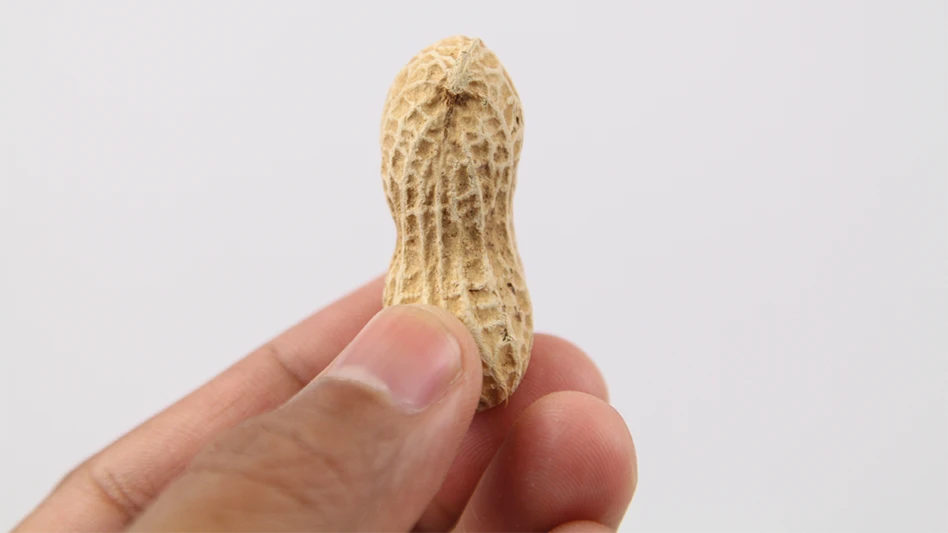 Cleaning and sanitizing of food contact surfaces is standard operating practice in plants. But do your SOPs also include all potential sources of that contamination?
Cleaning and sanitizing of food contact surfaces is standard operating practice in plants. But do your SOPs also include all potential sources of that contamination?
As a vector for distribution of contaminates such as mold and spores, the air in your plant can be of as much concern to food contamination as the surfaces themselves. "Everything in the air will eventually land on contact surfaces or on the food itself," said Paul Lorcheim, director of operations for ClorDiSys Solutions, Inc.
Most methods of cleaning, such as hosing or wiping of surfaces, do not get to the airborne particles, only those that have landed on the surface, Lorcheim said. These remaining particles, including pathogens such as Salmonella, Listeria, and E. coli, as well as spores and allergens, can all be airborne and land on surfaces between your last cleaning and next production run. "Anything that could become airborne could be an issue," he said.
|
Indoor Air Quality Issues Categorized The National Institute for Occupational Safety and Health (NIOSH) categorized major sources, causes, or factors of indoor air quality episodes as follows (estimates are rounded to nearest 10% and assessed from 2,200 episodes since the 1970s):
Some experts suggest the microbial contamination is higher than estimated because NIOSH evaluations did not always consider microorganisms or the possible importance of odors and MVOCs from microbials, toxins, and nonviable microbial contaminants. In addition, a number of recent studies suggest that microbiological air contaminants may be more important and widespread than previously believed, especially in humid coastal areas. Source: IAQ and HVAC Workbook, 4th edition, by D. Jeff Burton (IVE, Inc. 2011) |
"There is a relationship in any building to what is in the air and on surfaces," said Ian Cull, technical director of the Indoor Air Quality Association (IAQA). That which is in the air will be adsorbed into surfaces, onto which contaminates will also settle, he said. And in food plants the greatest concerns are the airborne biological contaminants that increase the risk of food spoilage and foodborne illness.
This is an issue because, he said, there are microorganisms everywhere, specifically mold and bacteria. Because that is unavoidable, it is imperative that food processors keep product water activity below the level that mold can use. "If it can't be below that level, [the product] needs to have preservatives or be eaten right away," he said.
And such airborne-contamination potential is not only an issue of unsanitary plants. Rather, Cull said, "Even clean, well-run facilities will have to deal with it."
The air handling system, itself, can contain many forms of contaminants, said Tyler McGauley, director of business development for LCS Kleen-Aire. "It can draw in powders and dusts, contribute moisture from room sanitation procedures, and end up growing mold in the unit and ducts. This can easily result in mold spores being blown into the food processing environment."
Worker Productivity. Air quality does not only impact food safety, Cull added. "Air quality will also have an effect on worker productivity, reduction of sick days, and general wellbeing."
"Comfort is very closely related to health and safety," affirmed D. Jeff Burton, president of IVE, Inc., and author of IAQ and HVAC Workbook. "There are some limited studies showing that productivity and safe work habits are directly correlated to the industrial work environment."
The same can be true of airborne odors. While these can impact the quality of foods, there is generally an even lower threshold for human comfort, in part because, Burton said, "we are dealing with people's perceptions."
Airborne control. Potential for airborne contamination can be controlled through three technical strategies, with a fourth administrative control:
1. Ventilation. "Every human occupancy requires ventilation," Burton said. At minimum, it needs to replace the oxygen that is consumed, take away air contaminants, and provide human comfort and health.
In fact, because of the people, processing, and odors being held within the confined space, "in any indoor environment, you typically find that the air quality is worse indoors than it is outdoors," Cull said. "But all these things can be flushed out and diluted by ventilation."
The ventilation allows fresh air to combine with indoor air and dilute the contaminants that build up within the space, Burton said, explaining, "If you double the amount of fresh air coming in, it will generally cut in half the concentration of airborne contaminants."
2. Filtration. However, there are some contaminants that are higher outdoors. "In most parts of the country, there is not much of an issue, except for molds; but if air contaminants are greater in the outdoor air than in the indoor air, you can have a problem," Burton said. For example, if mold is blooming outside, you don't want it coming into the food.
"You can to keep outdoor environmental issues from becoming an indoor environmental issue," he said.
|
On the Web: Resources
|
Thus, while ventilating indoor air out, you also need to filter the outdoor air being brought in. This is also true for air recirculated through a heating, ventilation, and air conditioning (HVAC) system. Most standard HVAC filters are media filters which remove particulates; but a food plant may also need to consider use of a phase filter, which removes gasses, odors and volatile organic compounds (VOCs). Most facilities have good systems, but, Burton said, these need to be maintained.
To do so, McGauley advised, "Establish a comprehensive preventive maintenance policy to include a good quality filter maintenance program, periodic HVAC system inspections for the purpose of identifying cleaning frequency needs, laboratory testing to identify what the contaminants are, and having the systems professionally cleaned prior to it potentially contaminating the product."
3. Source Control. While ventilation and filtration are important for air quality, "the best approach to controlling air quality is source control," Cull said. "Identify the actual source of what's causing the problem, then fix it; reduce it; minimize it." For example, if equipment is giving off an odor, your first reaction may be to add ventilation. Instead, he said, determine why it is odorous, then fix the issue; or replace it with a new, more efficient model.
The source is not always obvious, and you may need to dig around to find the source, or, he said, you may have to hire an industrial hygienist to pinpoint it.
4. Administrative Controls include:
- Air Quality Management Plan. Have a written plan that all workers know.
- Work Practices. Implement practices based on the plan that all employees know, understand, and follow.
- Distribution. Ensure correct airflow direction and even air distribution.
The most effective control is a combination of the three strategies implemented through the administrative controls. But the best combination must be determined by the plant based on meeting of FDA and OSHA standards while remaining cost effective.
The author is Editor of QA magazine. She can be reached at llupo@gie.net.

Explore the October 2011 Issue
Check out more from this issue and find your next story to read.
Latest from Quality Assurance & Food Safety
- AFDO Webinar Series Offers Strategies for Difficult Times
- FDA, USDA Rehire Some Staff, Multiple Sources Report
- Nestlé Opens Arizona Beverage Factory and Distribution Center
- Ingredion Invests $100 Million in Indianapolis Plant to Improve Efficiency, Enable Texture Solutions Growth
- Eagle Unveils Redesigned Pipeline X-ray System
- USDA Invests Up To $1 Billion to Combat Avian Flu, Reduce Egg Prices
- Washington Cats Confirmed with HPAI as Investigation into Contaminated Pet Food Continues
- USDA Confirms Bird Flu Detected in Rats in Riverside





